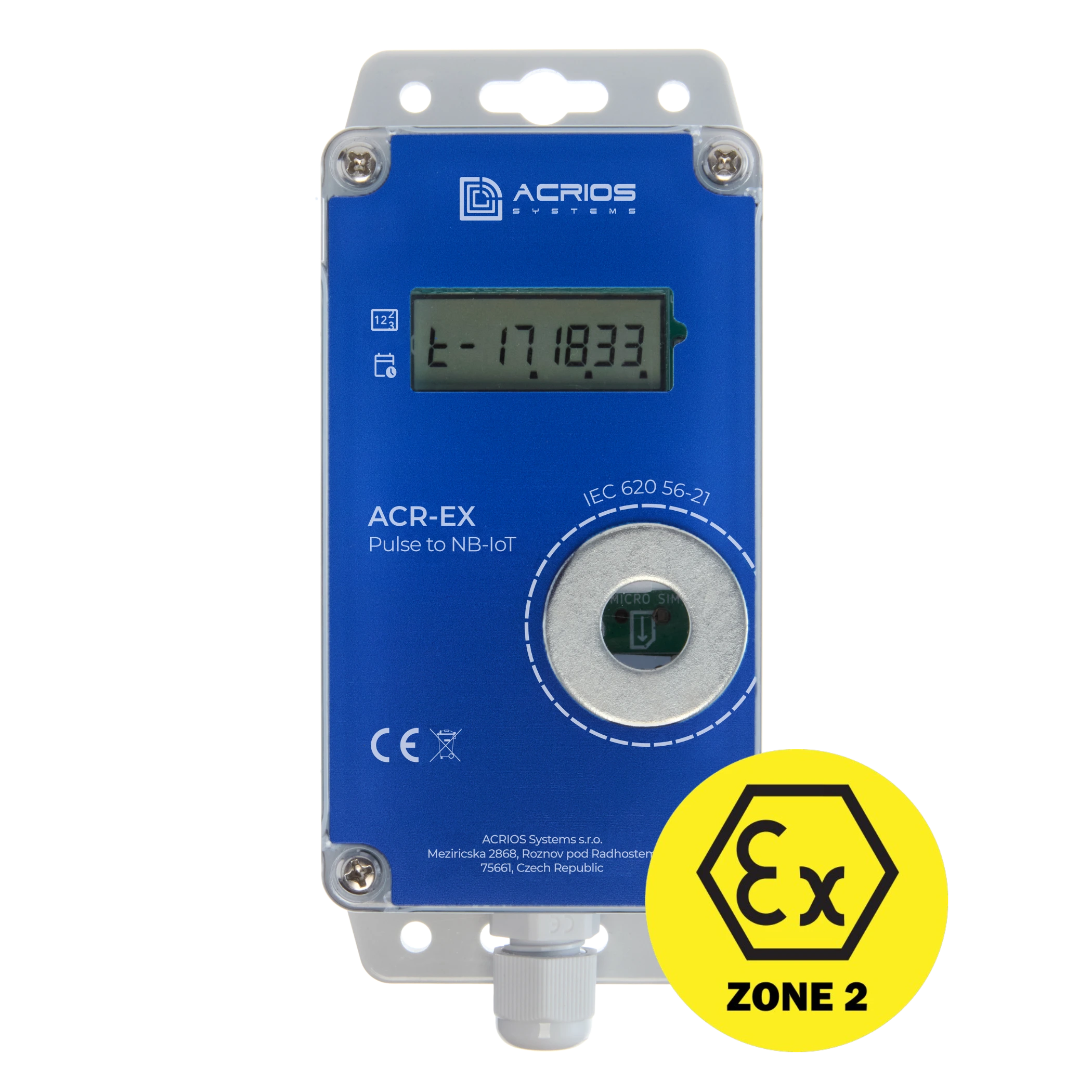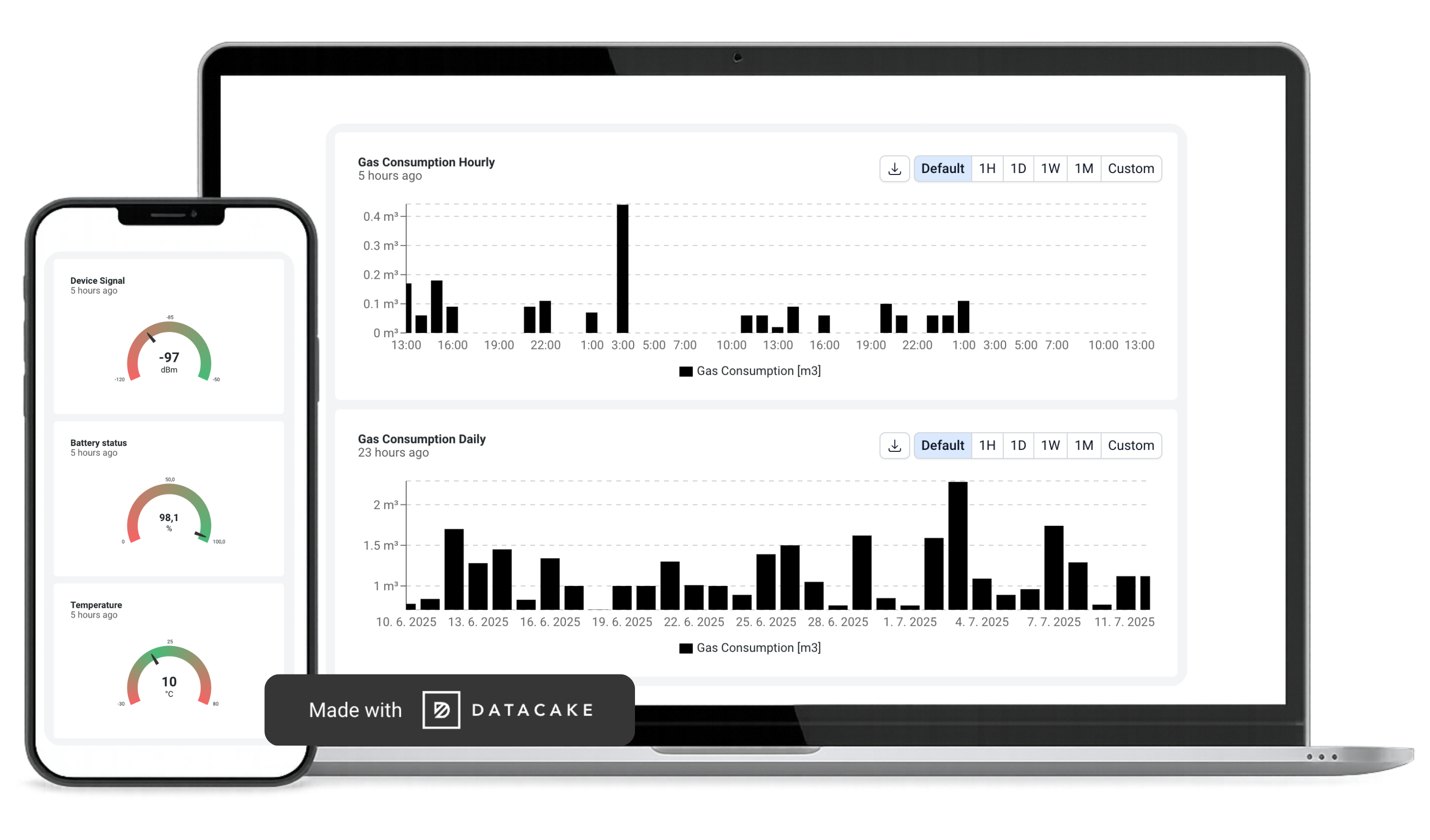ACRIOS helps gas utilities digitise meter readings in ATEX zones. With remote connectivity and field-ready devices, we simplify data collection from existing meters and reduce service costs and delays.




Safe for installation in an explosive environments. Ideal for gas metering applications.
On-site visual check via LCD with decimal point. Allows instant data verification and meter comparison.
Installs in under 10 minutes on any meter with a pulse output. No special tools required.
Configure the device via a standard optical head using our free software or integrate it with your existing system.
Secure remote updates and configuration, cutting site visits and meeting cybersecurity standards.
Built-in coulomb counter enables precise battery forecasting. 10-year lifespan with 40-day data retention.

Want to see how the ACR-EX data logger works in the field? See a live unit on Datacake platform. Explore a real-time dashboard with actual data, including signal strength, consumption graphs, transmission logs. What you see is exactly what you'd get from your own deployment.
Datacake offers a ready-made template for the ACR-EX, setup takes just minutes.



GasNet - Czech largest gas distributor
The remote gas meter reading equipment from ACRIOS has proven to be stable and of high quality. We appreciate that all our technical requirements were met and that we received all the necessary documentation and technical support for integration into our information system. We are very satisfied with the cooperation.
Connect your standard traditional gas meters to NB-IoT without need replacing the meter. ACR-EX datalogger installs in under 10 minutes, is configured via optical head, and verified on-site using the built-in display. No complex setup needed.
Utilities already using ACR-EX cut service visits, speed up billing and eliminate lost or delayed data. Want to see for yourself? We’ll gladly send you a test unit.



Yes, if they use an S0 or Wiegand output. You can send us the meter type with datasheet and we’ll verify compatibility.

No. On the contrary – ACR-EX is designed to connect to existing meters without replacement.

Yes, device is certified for ATEX zone 2 (depending on the variant). The device meets safety standards and offers IP67 protection.

Device is mounted on a wall, pipe, or bracket (using a strap or screws), connected to the pulse output, and powered on. We can deliver it preconfigured, including network settings and inserted SIM card you provide us with – setup takes around 10 minutes.
Device is configured locally by using an optical head with IEC 62056-21 protocol (compatible with standard technician tools) or remotely via NB-IoT (downlink/OTA).

By default, readings are taken hourly and sent once per day. Intervals can be adjusted as needed.

More than 10 years in standard mode with hourly readings. Battery is monitored using a coulomb counter providing an actual measurement, not an estimate.

Yes, the LCD screen shows the current counter value, so technicians or anyone else can check it directly on-site.

We support open protocols (UDP), standardised data formats, and direct transfer to SCADA/AMI systems. No intermediary platform needed.

Yes. We’re happy to send 1–2 units for pilot testing. We’ll help with configuration and onboarding.

Yes, as long as the meter provides a standard S0 or Wiegand signal. We support a wide range of voltages, frequencies, and output types. If unsure, send us the meter type with the datasheet and we’ll confirm compatibility.

The device stores readings internally for up to 40 days. Once the connection is restored, data is sent automatically. It also includes reconnection and network outage detection mechanisms.

Yes. We already support secure transmissions (DTLS), remote updates (FUOTA), and we’re actively developing full CRA compliance in partnership with Czech universities. Critical infrastructure clients are notified in advance.

We manufacture hardware, not data services and so we won't limit you with your deployment. You can use your own SIM card and transfer data directly to your backend – via UDP, including closed APNs or VPN tunnels.

Yes, we can help ensure future compatibility by following open standards, versioning, and modular architecture.